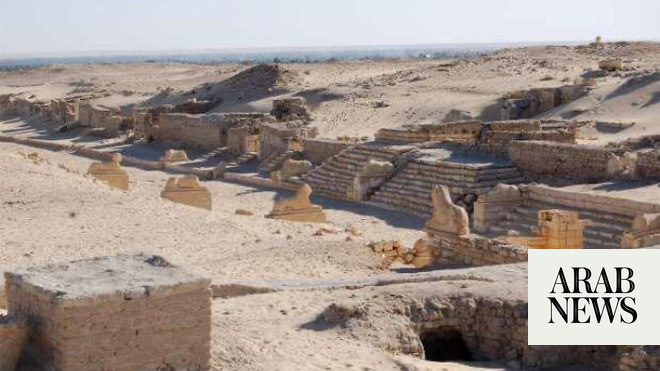
Items and buildings on display narrate the history and civilization of past eras, distinguished by their unique architectural details
CAIRO: The archaeological city of Madi in Egypt, which contains the largest Middle Kingdom temple ever found, is giving visitors a glimpse into the past.
Located in Fayoum Governorate, about 100 km from Cairo, Madi is home to an array of ancient sites.
Items and buildings on display narrate the history and civilization of past eras, distinguished by their unique architectural details.
Madi has attracted high interest from multinational foreign delegations and visitors interested in Ancient Egypt.
It also boasts the longest archaeological road from Ancient Egypt and contains distinctive artifacts, such as sphynx statues.
Dr. Ahmed Refaat, a professor of archaeology, said that the ancient city of Medinet Madi is one of the most significant archaeological sites in Fayoum.
It has put Fayoum on the map of governorates with important antiquities visited by researchers and tourists from around the world.
Refaat added that Rams Road — designed during the reign of King Amenemhat III in the Twelfth Dynasty and completed by his son, Amenemhat IV — is located within the city.
Dr. Nermin Atef, director of the Department of Archaeological Awareness in the Fayoum Antiquities Area, said that a mission from the University of Milan discovered the Madi temple in 1937.
She said the religious site comprises a single pillar supporting a roof with two columns and postal capitals, each representing a mail bundle.
The front of the building was decorated with an Egyptian cornice.
The entrance leads to a hall that runs perpendicular to the main entrance. The hall has three compartments, with the largest being in the middle. Inside the middle compartment, there is a one-piece statue of Renenutet, the goddess of the harvest.
Nermin added: “It is evident from the scenes and texts in this temple that some of them correspond to the stages of the temple’s founding rituals, such as the rope-pulling ritual.
“Some suggest that the first hall was called the Hall of Transfiguration, while the transverse hall was named the Hall of Offerings, featuring depictions of sacrifices made to the temple deities.”
The Italian mission uncovered the Way of the Rams, featuring lion statues, altars for sacrifices, several shrines and paintings.
The Rams’ Way is adorned with plaques honoring its creator, his wife and children. The shrine was recently opened to visitors.












